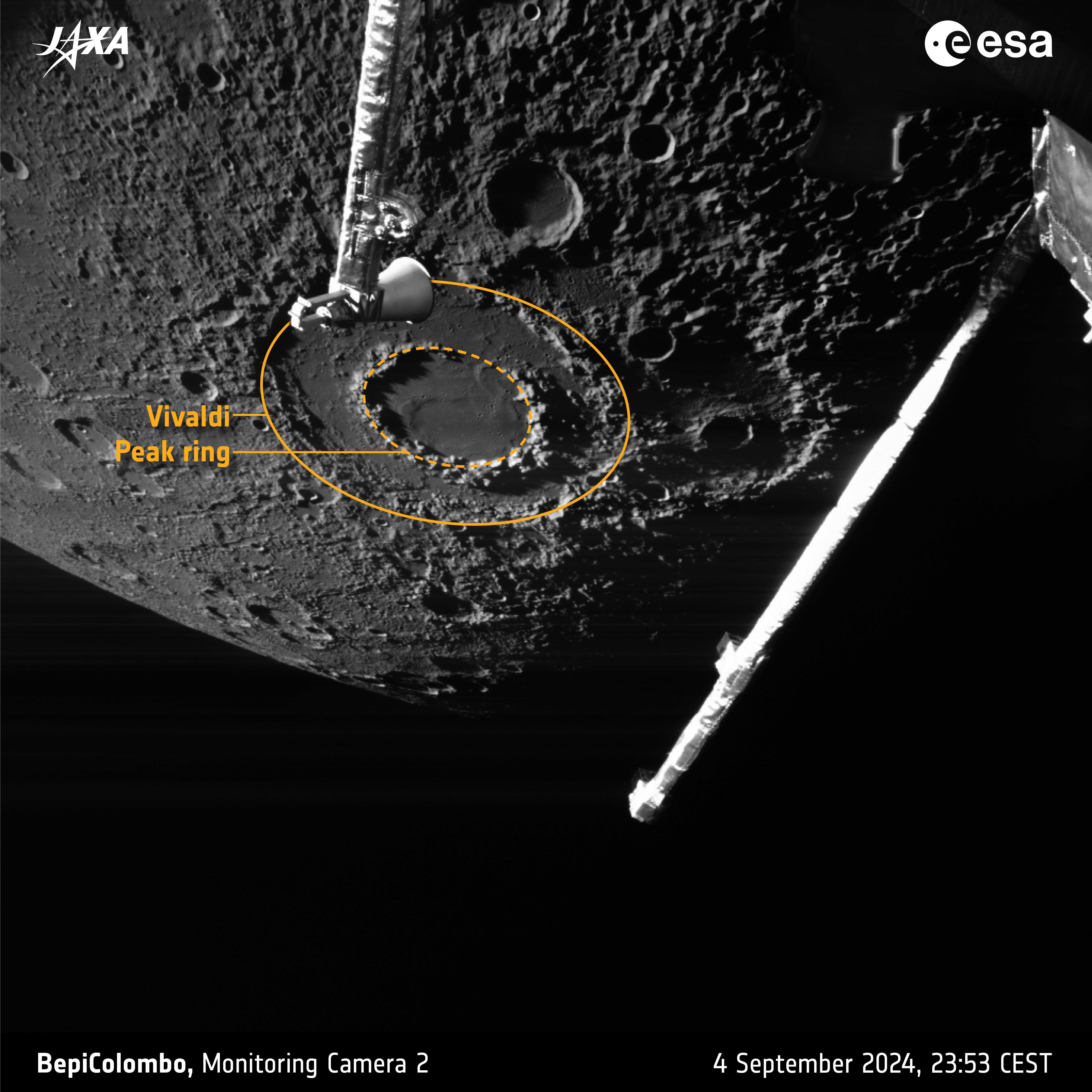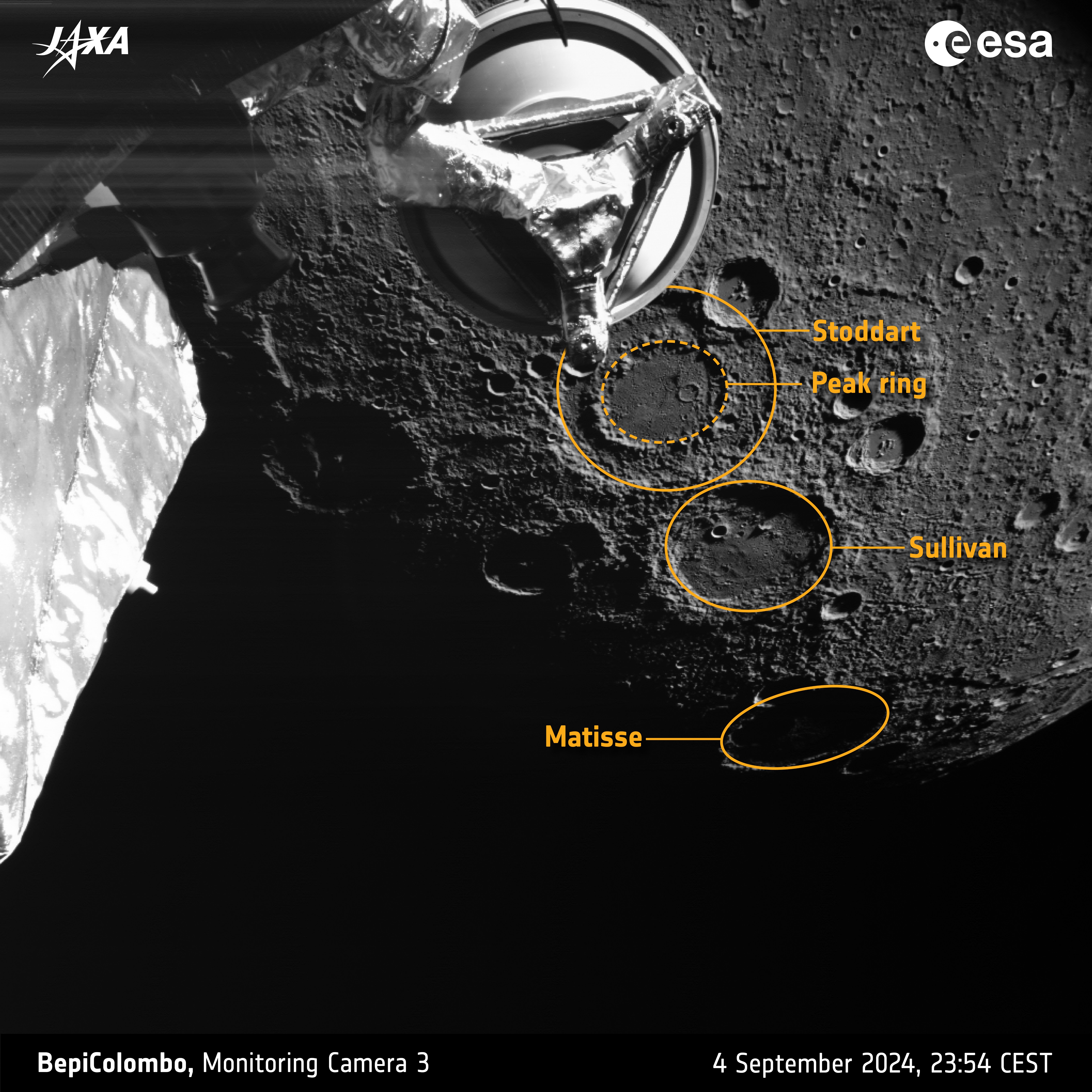Yesterday was not an easy day for the flight team of BepiColombo. The mission is a collaboration between the European and the Japanese space agencies and it will put two orbiters around Mercury in a few years. Unfortunately, back in April, the mission experienced thruster problems so for its fourth flyby, the team decided to send the probe much closer to Mercury for its gravity assist – a daring maneuver that paid off.
The decision was described as “quite tough” by Frank Budnik, who leads the flight dynamics team for BepiColombo when we spoke to him. But the flyby was a success so clearly, the team has been vindicated. The spacecraft is healthy, on the right trajectory, and was able to snap some beautiful photos of the innermost planet as it went by.
The images were taken by the three monitoring cameras, which are not actually designed to image Mercury. They are there so that the team can check the spacecraft, so it is just a nice bonus to get beautiful photos of the planet. The visible features are near the terminator, the line between night and day. The closest Bepi got to Mercury was 165 kilometers (103 miles), closer than the usual 200 kilometers (120 miles) safe altitude, on the nightside of the planet to minimize risk.

Vivaldi crater stunningly seen by BepiColombo.
Image Credit: ESA/BepiColombo/MTM
“Originally, all flybys at Mercury [are] at 200-kilometer altitude. There are many reasons you have to navigate at this altitude and this is already quite demanding. One of them is the thermal issues, so it was always set as a limit,” Frank Budnik, who leads the flight dynamics team for BepiColombo, told IFLScience.
The view from near the terminator shows the craters and ridges beautifully. And that includes a new crater named after New Zealand artist Margaret Olrog Stoddart (1865–1934). Craters and features on Mercury are named after famous deceased artists, musicians, or authors. Not too far from Stoddart, there is one dedicated to French artist Henri Matisse. Another photo shows the stunning Vivaldi crater, named after the Italian composer of The Four Seasons.

Stoddart crater is of great interest for future studies of the planet.
Image Credit: ESA/BepiColombo/MTM
However, the team stresses this is just a tease of what’s to come. The good cameras will be deployed when the science mission begins in 2027 but these close passages to the planet (and the next two in December and January) are a way to test the whole suite of instruments that are available at this time.
“BepiColombo is only the third space mission to visit Mercury, making it the least-explored planet in the inner Solar System, partly because it is so difficult to get to,” Jack Wright, ESA Research Fellow, Planetary Scientist, and M-CAM imaging team coordinator, said in a statement.
“It is a world of extremes and contradictions, so I dubbed it the ‘Problem Child of the Solar System’ in the past. The images and science data collected during the flybys offer a tantalising prelude to BepiColombo’s orbital phase, where it will help to solve Mercury’s outstanding mysteries.”
The mission will continue its slow change of orbit to match the innermost planet. If all goes to plan, it will enter orbit around Mercury in November 2026.
Source Link: BepiColombo Survives "Dangerous" Flyby Revealing Gorgeous New Views Of Mercury